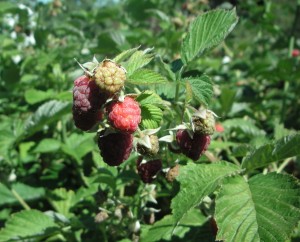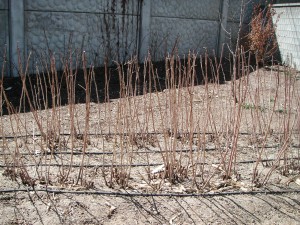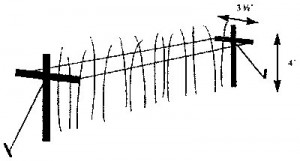Fall Pruning of Raspberries
Fall Pruning of Raspberries
 I love raspberries. And lucky for me we can grow great raspberries in east Idaho. But one of the problems we sometimes encounter is from heavy snow. A row or two of raspberries acts like a snow fence and captures all the snow the wind brings in. Then in the spring when things begin to thaw the drifted snow settles and can break down the canes of the berries laying them flat.
I love raspberries. And lucky for me we can grow great raspberries in east Idaho. But one of the problems we sometimes encounter is from heavy snow. A row or two of raspberries acts like a snow fence and captures all the snow the wind brings in. Then in the spring when things begin to thaw the drifted snow settles and can break down the canes of the berries laying them flat.
One way to help prevent this is to prune your raspberries in the fall. For July bearers like Canby that can be done any time now. Some wait until the leaves have fallen, but there is no need to. Sometimes I don’t get it done until spring, but then I run the risk of having them get laid down with the snow.
You’ll want to remove all the canes that bore fruit this year. Leave most of the new canes that came up this year for next year.’s crop. But you will want to remove any that are coming up “out of bounds”. Then I prune what remains down to about 4 feet in height. Some people prune them lower, but that height seems to work well for me.
If you have everbearing raspberries like Caroline or Heritage your pruning regimen is altered drastically. Everbearers bear twice a year. The new canes that come up each year bear that fall. Then they will bear again the following July. But for convenience most people wait until the harvest is done in October and then they cut them completely to the ground. By doing this you sacrifice the summer crop, but it takes all the headache out of pruning. You just cut them all off at the ground every year.
You can also support your raspberries with tall stakes or, ideally, with a two wire trellis. The wires of the trellis are usually placed about one foot below the height at which the canes have been pruned. The wires are placed on each side of the post with large staples or nails. Sometimes crosspieces are nailed to the posts so that the two wires are 1 to 3 feet apart. A second set of wires is sometimes placed a few feet below the top wires. The canes can be tied to the top set of wires if needed. Certain varieties may need no support at all. You will know from experience if yours need this support. I find with my Canby and Caroline in Idaho Falls I don’t need to support them with wires if I get them pruned in the fall.




